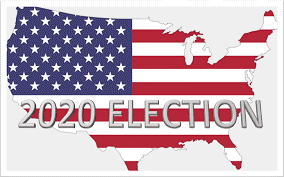 As November 3rd is only several days away, we are being bombarded with TV ads, radio ads, political rallies and pollster phone calls. It would be naive and unwise to believe this is not spilling over into our workplaces.
As November 3rd is only several days away, we are being bombarded with TV ads, radio ads, political rallies and pollster phone calls. It would be naive and unwise to believe this is not spilling over into our workplaces.
So here in Part 3 (the final article on the topic of this subject), we will discuss some steps that we as employers should be considering even at this late date—assuming we haven’t already done so.
- These steps piggyback on Part 2’s discussion about the two most common misconceptions about politics in the workplace.
Keep in mind that there are reasons to be ready for politics and the workplace to intersect (perhaps one could use the word “collide”) well after the election. These reasons include:
- Some so-called experts are predicting that it could be days or even weeks before the final outcomes are known—especially with some states accepting mail-in ballots received after election day.
- The potential for challenges by either or both parties as to the outcomes in which the margin of victory is very small or the winner is disputed.
- The controversial constitutional challenge to the Affordable Care Act will not even have oral arguments made to the U.S. Supreme Court until November 10.
WHAT CAN AN EMPLOYER DO NOW?
- 1) Remind employees that within the organization everyone is on the same team with the common goal of:
- Providing your customers/clients with high quality products and services
- Outperforming your competitors
- 2) Restate that conversations about politics are prohibited during work time in work areas
- 3) Reaffirm that your organization’s culture includes:
- All employees are expected to treat one another respectfully
- Embracing and valuing diversity not only in race, national origin, gender, etc., but also in points of view
- 4) Relate that political discussions can negatively impact:
- Maintaining a harmonious work environment
- Productivity
- 5) Reinforce with your supervisors, managers and executives that engaging in a political conversation with a subordinate has the potential for an employee to allege harassment, bullying or discrimination
THREE KEY POINTS
An indicating molecule similar to testosterone connects with the assortment of chemical receptors in the brain. cialis price
- 1) As with other aspects of an organization’s work rules, policies and practices, the key for employers is to ensure that they are uniformly enforced.
- 2) Before taking any disciplinary action against an employee:
- Review whether the conduct is protected by either state or federal law
- Determine if there is a bona fide business interest in restricting the speech or conduct
- Be confident the employee’s act violated a known policy or practice
- Look at how similar situations have previously been handled
- 3) Going forward, ensure:
- Workplace policies and employee handbooks statements are updated as needed, such as:
- Employee speech and activity, including but not only related to politics and social causes
- Dress code, including wearing of badges, buttons or clothing/hats
- Personal appearance
- Regularly communicating with employees on a periodic basis about the organization’s culture and values, work rules, policies, etc.—the reasons for them
- Workplace policies and employee handbooks statements are updated as needed, such as:
- If there is any doubt, consult with legal counsel practicing in the area of employment law or with a management consultant with appropriate expertise.
FOR MORE INFORMATION ON HOW TRINITY CAN HELP YOU WITH PEOPLE-RELATED MATTERS:
- E mail Trinity at info@TrinityHR.net
- Visit our website at www.TrinityHR.net
- Call us at 856.905.1762 or Toll Free at 877.228.6810
You have HR questions…Trinity has answers!